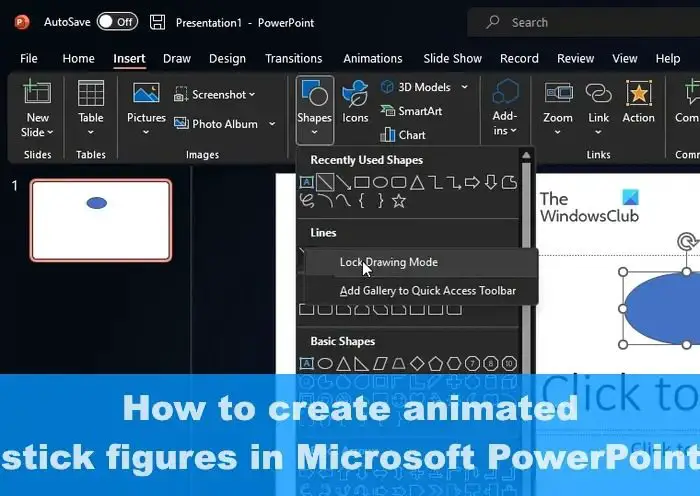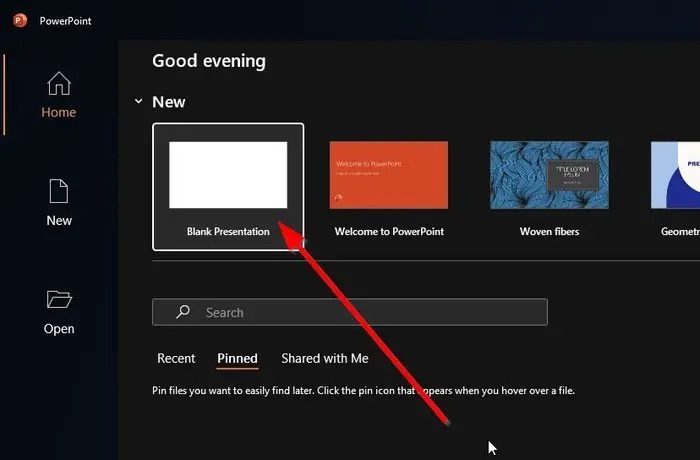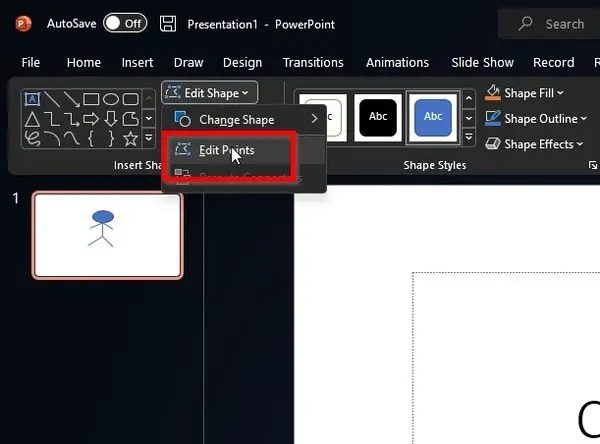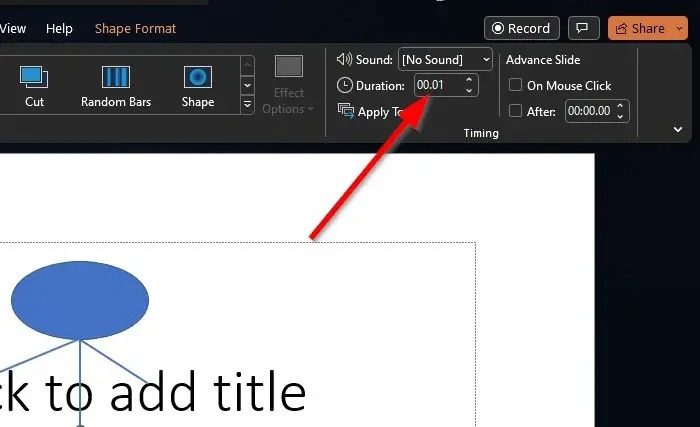Microsoft PowerPoint is a tool that focuses more on delivering the best presentation than anything else, and one of the ways to do that is to use animations. Luckily, the PowerPoint app comes with the ability to create animations, but do not expect anything impressive along the lines of a program designed for creating animation. What we are going to explain here is how to create animated stick figures with PowerPoint.

How to create Animated Stick Figure in PowerPoint
To create an animated stick figure to help presentations in Microsoft PowerPoint, follow the steps laid out below:
- Open a new PowerPoint document
- Clear the first slide of content
- Go to Shapes
- Choose the Oval option
- Draw a head
- Choose Lock drawing mode
- Draw stick-figure lines
- Slightly nudge your drawing
- Select Edit Points
- Verify that No Transitions applies to the slide
- Animate your work
We must first begin by opening Microsoft PowerPoint.

The next step is to fire up a new or existing PowerPoint document.
If you do not have a blank PowerPoint presentation document, then you must ensure the first slide is relieved of all content.
- To do this, navigate to the first slide right now.
- From there, press CTRL + A to highlight all content.
- Hit the Delete button to clear the side.
After you’ve deleted all contents from within the first slide of your presentation, you must now navigate to the Shapes area.
The best way to do this is to click on the Insert tab.
Once that is done, please look at the Illustrations section on the Ribbon.
From the Ribbon, then, you are required to select the Shapes option, something you cannot miss.

From the Shapes section, you are required to select the Oval shape. If you are not sure which one is the Oval, well, it is the one that is round but not exactly a circle.
To get this done, then, please look to the Line category via Shapes.
Select the 7th shape under Lines if you are using the current version of Microsoft PowerPoint.
After selecting the Oval shape, you must use it to draw a simple head.
Ensure the SHIFT key is pressed and held down.
Keep the key down while clicking and dragging your mouse to draw a circle.
The circle will become the head of your stick-figured person.
The next thing you are going to do here is to select Lock Drawing Mode. You may be wondering what this is, well, it is all about locking Microsoft PowerPoint into this mode to make it easier for users to draw for as long as they want without issues.
In order to activate Lock Drawing Mode, please go ahead and click on Insert again.
- Select the Shapes option from the Ribbon menu.
- From there, choose the Lines option.
- Right-click on one of the Lines tools, then select Lock Drawing Mode.
- Doing this will activate the tool to keep it active at all times.
- You must now define your stick figure with arms and legs. This will not be hard since drawing mode is locked in.
- Use the mouse to draw the additional limbs needed for your stick figure.
- Double-click when you’re done with one line before starting the other.
To get out of the drawing mode, please hit the Esc key.
If the overall design is not set in the correct spot, then you can change this by giving the soon-to-be animation a slight nudge.
- To do this, please right-click on the initial slide.
- Select the option that reads, Duplicate Slide from the menu.
- Next, you must go ahead and press CTRL + A to select your entire work.
- Finally, use the arrow keys on the keyboard to move the drawing either to the right or left.

What you need to do next here is to find Edit Points and select it right away. This is easily done so let us explain what to do.
- Begin by switching to the Format tab.
- After that, find the Drawing Tools group.
- Select the option that reads, Edit Shape.
- From that area, please click on Edit Points via the visible dropdown menu.
- Use the Edit Points feature to alter the drawing, but only slightly.
You can choose to duplicate the slide and alter the drawing as much as you want. Just ensures the duplicate work never deviates greatly from the original.

Next up, it is very important to ensure that No Transition is applied to your slide.
Do this by going to the second side via the thumbnail area to the left.
Switch over the Transition tab via the PowerPoint ribbon.
Find the group that is called, Transition to This Slide.
Verify that the No Transitions option has been applied to the slide.
Finally, it is time to animate your drawing to good effect. Let us look at how to accomplish this in quick succession.
- Move over to the Timing group via the Ribbon.
- From within that group, please type 01 directly into the Duration field.
- Doing this will set a one-second slide duration.
- Ensure that On Mouse Click is unchecked for your animation to play without assistance.
- Now, from the After field section, enter 0 in a bid to remove the interval PowerPoint uses to wait before moving to a new slide.
- Click the Apply to All button.
Play your finished animation to see if things are working according to your specifications.
READ: PointerStick is a handy Virtual Pointer Device tool for big-screen presentations
Does Microsoft PowerPoint have a pen tool?
We can be 100 percent certain that PowerPoint has a pen tool. You can access it by clicking on the Sideshow tab, then choosing either From Beginning or From Current Slide. Click on the Pen button, then choose your preferred style.
How do you make an object appear and then move in PowerPoint?
All you have to do is select the object on the relevant slide. Via the animations tab, select the animation pane, then click Add Animation. Choose your preferred animation effect, then apply the changes to the same object, and that is it; you’re done.
Leave a Reply